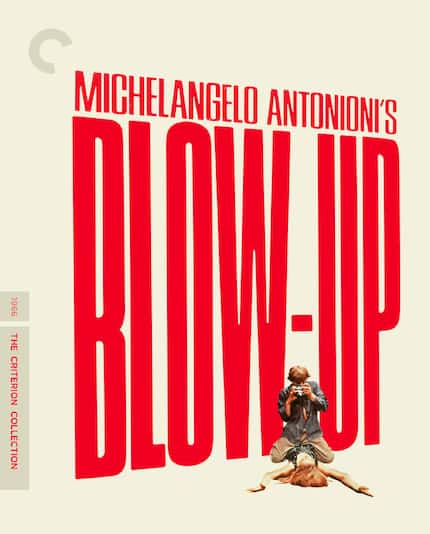Essential is a series from Dallas Morning News writers spotlighting timeless works of art and culture.
Essential viewing: Blow-Up (1966, directed by Michelangelo Antonioni)
There's something rotten in the swinging city of London, something hiding amid the bright colors, comely fashion models and rock 'n' roll. On the most literal level it's a corpse, discovered through the fastidious work of a mod photographer. But there's also something intangible. It's an invisible cloud of ennui, that main ingredient of most movies made by Michelangelo Antonioni.
Blow-Up, now available as a shimmering Criterion Blu-ray, was Antonioni's first English language film, and it remains his most popular. The Italian maestro had long explored the modern world's capacity for emptiness in movies including L'Avventura, La Notte and L'Eclisse. Now he had a three-picture deal from MGM, and a yen to make a film about photography.
As Antonioni told Roger Ebert in 1969, Blow-Up is "not about a murder but about a photographer." That nameless photographer, played by David Hemmings with a feline swagger and agility, makes his best money in the fashion world. An early scene finds him ravishing the model Veruschka with his camera, eventually straddling her to make the sexual metaphor complete. He likes to be in control, shouting his directions — "Rethink it!" "Yes, very tasty!" He admonishes another model for chewing gum. He's a pro, but he soon finds himself in over his head.
Blow-Up is built around a pair of nearly wordless sequences. In the first, our photographer stalks a couple in a lush green park, clicking away until the woman, played by Vanessa Redgrave, accosts him and demands the film from his camera. In the second, he develops the film, starts placing the photos side by side on his wall and realizes the important (and violent) stuff is happening on the periphery. His gradually unfolding response is fascinating: He seems more struck by the photographic moment than the moral implications.
His camera has caught something the naked eye couldn't see. But Blow-Up is also concerned with how the camera can obfuscate and distort reality. The photographer initially believes he has prevented a murder, before he comes to the correct conclusion that he has witnessed one (or, rather, his camera has). Antonioni's contemporary Jean-Luc Godard famously said, "Photography is truth." In Blow-Up, we're reminded that photography can also lie.

Blow-Up arrived in 1966, near the peak of the international art film boom. Its swinging London location made it accessible and sexy, and broadened Antonioni's audience beyond hard-core cinephiles. But Blow-Up is still every bit an Antonioni film, an elliptical mystery far more interested in questions than answers. Resolution is less the point than tension, detachment and interpretation.
Influences and progeny bracket Blow-Up on either side. Where this photographer witnesses a murder with his camera, the deranged filmmaker in Michael Powell's Peeping Tom (1960) films his London victims as he kills them. Brian De Palma, never one to shy away from imitation, made Blow Out(1981), in which a sound technician (John Travolta) accidentally tapes audio of a murder. Francis Ford Coppola had actually beaten De Palma to the punch with his haunting 1974 film The Conversation, in which a paranoid surveillance expert (Gene Hackman) records the plotting of a murder.
Still, there's only one Blow-Up. The period, the place and the style mark it as a singular achievement, a crossover art film that netted Antonioni his only two Oscar nominations (for directing and writing). After all these years it still swings, usually in the direction of darkness.


/cloudfront-us-east-1.images.arcpublishing.com/dmn/22MCUCQFHMPKVZQ2WMXX5O437Y.jpg)
/cloudfront-us-east-1.images.arcpublishing.com/dmn/PIRSXLSTI5CXFHLDUNAQQ5I4LY.jpg)
/cloudfront-us-east-1.images.arcpublishing.com/dmn/Z6Q3ZN5V5JGBND5KFCSYUKOVEM.jpg)
/cloudfront-us-east-1.images.arcpublishing.com/dmn/BPESNKYBHJFDDJOIOMXBWEEFTE.jpg)
/cloudfront-us-east-1.images.arcpublishing.com/dmn/34FLCDTPKNDRTD35ONBVT3MSDE.jpg)